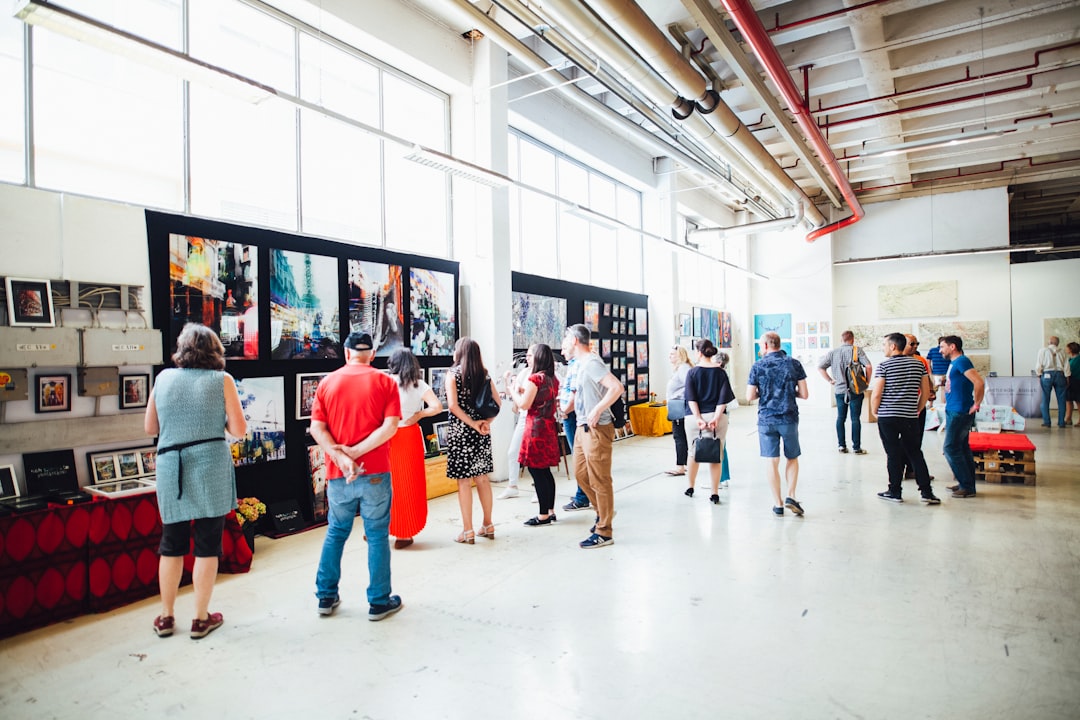Music and visual art have long been intertwined, with each form influencing and inspiring the other in countless ways. From album covers to music videos, from opera to symphonies, the relationship between music and visual art is a rich, complex, and endlessly fascinating one.
One of the most obvious ways in which music and visual art intersect is through album cover art. Since the earliest days of the recording industry, artists and musicians have recognized the importance of creating visually striking images to accompany their music. From the psychedelic designs of the 1960s to the minimalist aesthetic of today, album covers have played a crucial role in shaping our perception of music and helping to define the identity of a band or artist.
One of the most iconic examples of the relationship between music and visual art is the cover of The Beatles’ iconic album “Sgt. Pepper’s Lonely Hearts Club Band.” Designed by the British pop artist Peter Blake, the cover features a collage of images of famous figures from history and popular culture, including Marilyn Monroe, Bob Dylan, and Albert Einstein. The cover is a perfect reflection of the album’s eclectic mix of musical styles and influences, and it has become one of the most recognizable images in the history of popular music.
Another important example of the intersection of music and visual art is the music video. Since the advent of MTV in the 1980s, music videos have become an essential part of the music industry, with many artists using them as a way to enhance and interpret their music through visual storytelling. Some music videos are simple performance pieces, while others are elaborate narrative works of art that can stand on their own as works of visual art. One of the most famous examples of the latter is Michael Jackson’s groundbreaking video for “Thriller,” which features elaborate dance sequences, special effects, and a storyline that plays out like a mini horror movie.
Beyond album covers and music videos, the relationship between music and visual art can also be seen in more traditional forms of art, such as painting and sculpture. Many artists throughout history have been inspired by music in their work, creating visual interpretations of musical themes and emotions. The Russian painter Wassily Kandinsky, for example, was deeply influenced by music in his abstract paintings, which he believed could evoke the same emotional responses as music. In turn, many musicians have drawn inspiration from visual art in their music, incorporating visual imagery and symbolism into their lyrics and compositions.
In addition to inspiring each other’s work, music and visual art also have the power to enhance each other when experienced together. One of the most powerful examples of this is opera, a form of art that combines music, drama, and visual art to create a multi-sensory experience for the audience. In opera, the music serves as the emotional backbone of the story, while the visual elements, such as costumes, sets, and lighting, help to bring the story to life in a way that words alone cannot.
The relationship between music and visual art is not limited to traditional forms of art, however. In recent years, new technologies have opened up exciting new possibilities for the fusion of music and visual art. Interactive installations, virtual reality experiences, and video mapping are just a few of the ways in which artists are experimenting with combining music and visuals in innovative and immersive ways.
One of the most exciting developments in this area is the rise of live music performances that incorporate visual art in real time. Musicians and visual artists are now collaborating to create multimedia performances that blur the boundaries between the two art forms. These performances can range from simple projections that accompany a musical performance to more elaborate multimedia shows that combine live music with video art, animation, and interactive elements. In these performances, the music and visuals are not just separate elements but are integrated in such a way that they enhance and complement each other, creating a truly immersive and unforgettable experience for the audience.
As the relationship between music and visual art continues to evolve and grow, it is clear that the two art forms have a unique and powerful connection that will continue to inspire and influence artists for generations to come. Whether through album covers, music videos, opera, or live performances, the fusion of music and visual art has the potential to create something truly magical that transcends the boundaries of both art forms. It is this endless capacity for creativity and innovation that makes the relationship between music and visual art such a rich and rewarding one, and one that will continue to captivate audiences and artists alike for years to come.

